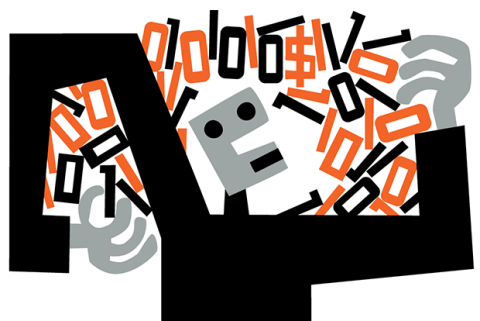Enterprise architecture is often seen as esoteric: It’s nice to have, yet generally considered somewhat removed from your day-to-day operations. But this couldn’t be further from the truth.
Thanks to digital transformation, your organization likely has a number of different systems, all of which should communicate with one another. A customer can’t mean one thing in your customer-facing system and a completely different thing in your billing system. This is where good enterprise architecture comes into play, as it enables you to have a common language across your organization.
[ Learn more from Chris Fielding. Read also: 3 ways to create citizen data scientists in your organization. ]
How do you ensure quality enterprise architecture? It starts with master data management (MDM).
The problem with overlooking master data management
Maintaining data in multiple systems without an MDM solution requires users to manually input data into different systems to keep them running and updated across the organization. This can lead to inconsistencies.
Take customer data, for example. Say you have Customer A residing in multiple systems. Some might input “Customer A,” into one system, while others might use “customer a” in a different system. Over time, irregularities are bound to arise, and eventually, the quality of information will degrade.
This is just one customer; imagine facing this challenge with all of your customers.
Moving forward by taking a step back
We encountered this very situation ourselves. We were moving to Software-as-a-Service and we needed to ensure that our SaaS applications could talk to all the different parts of our organization, as well as pass data to other SaaS providers we were using.
The only way to make all of this happen was to go back and look at our MDM with a specific focus on customers and contracts.
Mapping out a strategy for data consistency
Where were we going to manage customers? This was the first question we asked ourselves.
After initially managing customers in three different systems, we realized the best course of action was to manage everything in a single system with centralized ownership of the data and start putting MDM around that customer entity.
Since our customer’s information showed up as one name in one system and a different name in another, we realized it was going to be difficult to integrate all of this data. We now faced the tall order of making sure there was a single view of each customer and it was the same no matter what system it appeared in.
We manually integrated all the existing data into our centralized hub – to make sure there were no inconsistencies – and once we had that done, we turned to microservices.
Microservices was our bridge to the data and enabled us to automate the process of continually updating all data across systems. With microservices in place, other systems could now access this architecture and work in unison to run the business more efficiently.
[ Making a case for microservices? Read also: How to explain microservices in plain English. ]
The benefits far outweigh any pushback
Parts of your organization might be hesitant to give up managing their data. After all, they likely feel a sense of ownership over this information. But there are immense benefits to managing the data – in our particular case, the customer data – from a single place and having everyone in the organization use that as a starting point.
We’ve found that it’s allowed us to have a full perspective of our customers. We’ve been able to see the full scope of our customers’ services because the data is consistent across every system within our organization.
Having a single view of your customers minimizes the amount of maintenance needed for critical customer data, including names, addresses, phone numbers, etc. It also allows you to share information about your customers from multiple systems, which can help speed up and simplify sales processes. And since your key data is in a central location, you’ll have a better understanding of your overall inventory.
Additionally, it makes integrating new systems easier and helps with cybersecurity. Once you have a centralized hub for the data, you no longer need point-to-point interfaces, as your systems only need to communicate with the hub rather than numerous other systems. This provides more control and protection for your vital information from potential threats like viruses, malware, or ransomware.
No overnight success
Implementing an MDM solution doesn’t happen overnight. Some organizations have systems that are 10 or 15 years old, and it’ll take time to bring them up to speed. However, the time it takes you to implement an MDM solution is minimal compared to the time it’ll save you down the road.
Digital transformation has made it imperative that all of the systems within your organization can communicate. But how can they possibly communicate if they can’t speak the same language?
MDM gets all your systems on the same page. It creates data consistency and mobility and ensures that you have good enterprise architecture.
Not exactly esoteric, if you ask us.
[ How can automation free up more staff time for innovation? Get the free e-book: Managing IT with Automation. ]






